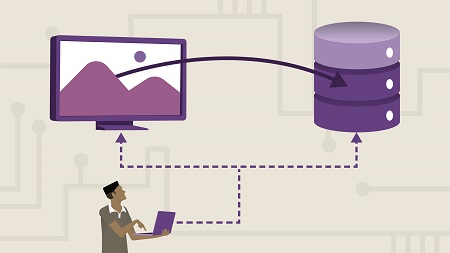
English | MP4 | AVC 1280×720 | AAC 48KHz 2ch | 2h 37m | 1.69 GB
ASP.NET MVC is the tool of choice for building modern, dynamic, and scalable web applications. MVC 5 includes features that enable rapid, test-driven development. In this course, Jonathan “J.” Tower teaches the essentials of the ASP.NET MVC 5 framework. Learn what models, views, and controllers are and how data is passed between them. See how controller classes and their action methods are used to organize your application’s logic; how to use strongly typed models in your views; how to build models with Entity Framework; and how to create your own custom validation attributes. He also shows how to create and perform unit tests to ensure you build software that works the way it’s supposed to.
Topics include:
- Creating a new ASP.NET MVC 5 project
- Using controllers and action methods
- Creating attribute routes
- Strongly typed models
- Building HTML with HtmlHelpers
- Sharing views
- Building models with Entity Framework
- Unit testing code
Table of Contents
1 Powerful web applications with MVC 5
2 What you should know
3 Tools used
4 Demo project overview
5 Model-view-controller (MVC) pattern
6 Advantages of MVC
7 Visual Studio new project dialog
8 Walking through the new project template
9 How MVC services requests
10 Startup configuration and global routing
11 Handling events in Global.asax
12 App config with App Start
13 Putting the pieces together
14 Using controllers and action methods
15 Returning a view response
16 Using other response helpers
17 Attribute routing
18 Advanced attribute routing
19 Securing your app with filters
20 Customizing your actions with filters
21 Altering action results with filters
22 Handling exceptions with filters
23 View folder organized by convention
24 Razor Transitioning from code to markup
25 Implicit explicit expressions and blocks
26 Adding comments to Razor
27 Handling form posts with IsPost
28 Passing data from the controller
29 Bringing models and views together
30 Building HTML with HTML Helpers
31 Advanced use of HTML Helpers
32 Define your own inline HTML Helpers
33 Creating custom HTML Helpers
34 Sharing layouts
35 Using bundles and sections in layouts
36 Rendering partial views
37 Escaping the @ symbol
38 Data models vs. view models
39 Building models with Entity Framework
40 Validation with data annotations
41 Validation with ModelState
42 Displaying validation in the view
43 Building custom validation attributes
44 Testing a controller’s selected view
45 Testing a controller’s view data
46 Next steps
Resolve the captcha to access the links!